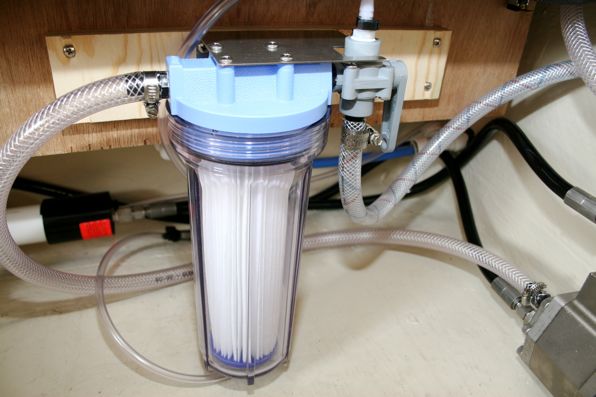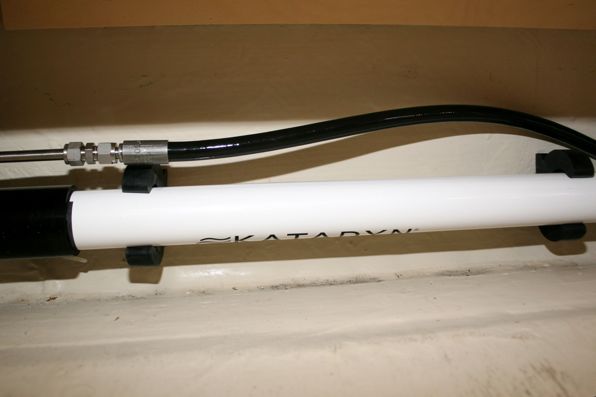We can now ALMOST make water
With the exception of making the final electrical connection, our new Katadyn Powersurvivor 80E watermaker is ready to go!

The coiled white wire just needs to be connected to the terminal block to make it fully operational.

This filter needs to be checked almost every time the unit is run. Ease of access is important.

We are fortunate in that we had a large, relatively open area that we could allocate to the install. Although it is a prime storage area, we felt that using the open space would make the necessary routine maintenance much easier, and thus us much happier!
Unfortunately, we are not yet sure how to test the unit. It is, after all, a desalinator, meant to work in salt water, and it will be a while yet before we are out of fresh water. I plan to shoot the company an email to see what they have to say about this.


Hi Mike
You do quality work. Very nice installation. I’ll be over for a glass of water.
Now I know why I didn’t see you today.
Terry
Thanks Terry.
Yes, you didn’t see me because I was stuck hanging upside down in the bow locker, clamping a hose onto the seacock. Not too fun. 🙂
Very exciting! That is probably a Spring project (or maybe a winter project) for us.
I look forward to reading about your install.
You should be able to run it in freshwater to test the plumbing out. The pressure inside the membrane will be lower though. On my Spectra, my pressure drop by about 4:1 after all the salt water gets pushed through the membrane.
To test if the membrane is working properly, you should be able to run some ocean water, or synthetic salt water through the system from the pickling circuit and test the product water for the right TDS level. Make sure that any shore side water is run through a good carbon filter (99% chlorine removal) though, as chlorine kills membranes and is in a lot of residential water supplies.
Thank you.
I can mail you some seawater…
bob
Thanks. 🙂
You can buy some aquarium salt and create your own “ocean”. If you have a hand-held meter mix enough salt into the water to make it 30,000PPM. Without a meter you should mix it until there is no salt settling into the bottom of your bucket.
Fair Winds,
Mike
Thanks Mike.
As far as testing the water quality is concerned, before installing marine electronics for a living, I spent five years working for our local municipal water department and would recommend that you find out if your provider has a lab that can test it. The test is very thorough, as per EPA regulations, and would even reveal any type of residual created by the filter. Our lab charges $50, but that would be a small price to pay for the peace of mind.
Interesting. Thanks Jay. I will look into that too.